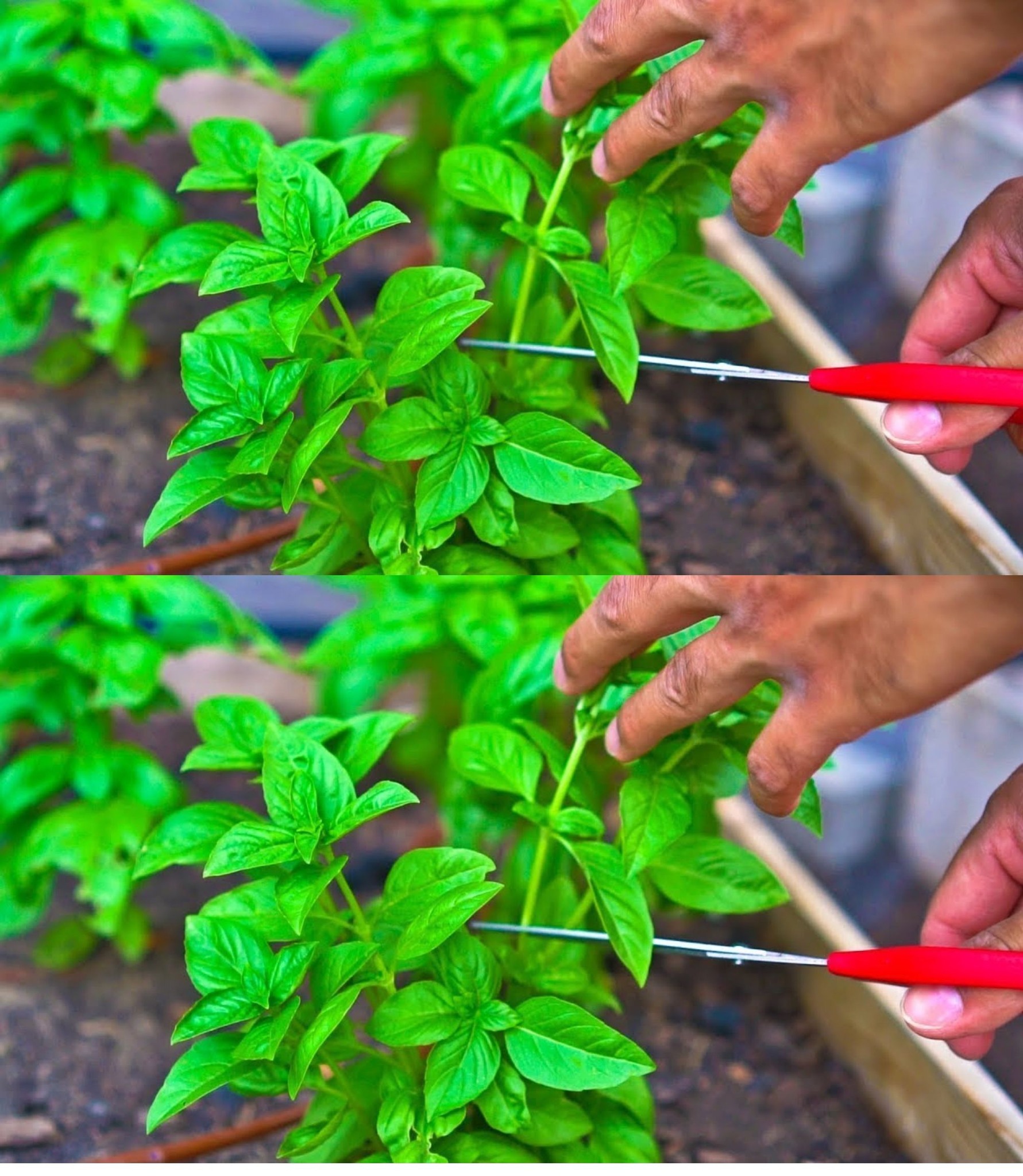
If you have basil that appears wilted or slightly limp, there’s a chance you can revive it using water. This method works best if the basil is not completely rotten or dried out. Here’s an “ancient trick” that many gardeners and cooks use to refresh wilted herbs:
Steps to Revive Wilted Basil:
1. Trim the Stems
- Use a sharp knife or scissors to trim the ends of the basil stems. Cut off any dark or rotten parts.
2. Prepare Lukewarm Water
- Fill a bowl or jar with lukewarm water. The water should be around room temperature—not too hot and not too cold.
3. Submerge the Basil
- Place the trimmed basil stems into the lukewarm water, making sure that most of the stem is submerged.
4. Place in Indirect Light
- Set the bowl or jar with the basil in a location that receives indirect light. Avoid direct sunlight, which can stress the plant further.
5. Wait and Observe
- Leave the basil in the water for a few minutes to an hour. You should start to see the leaves perking up as they rehydrate.
6. Remove and Dry
- Once the basil has perked up, gently remove it from the water and pat the leaves dry with a paper towel or clean cloth.
7. Use or Store Properly
- Use the refreshed basil immediately in your cooking, or store it properly to extend its life. To store, you can wrap the basil in a slightly damp paper towel and place it in a plastic bag in the refrigerator. Alternatively, keep the stems in a jar of fresh water on the countertop, changing the water daily.
Tips for Storing Fresh Basil:
- Avoid washing basil until you’re ready to use it, as moisture can accelerate decay.
- If you have a large amount of basil, consider making pesto or pureeing the leaves with a bit of olive oil and freezing them in ice cube trays for later use.
If the basil is truly rotten—characterized by dark, mushy spots or a foul odor—it’s best to discard it, as it’s unlikely to recover and could potentially be harmful if consumed. Always use your best judgment and prioritize food safety
